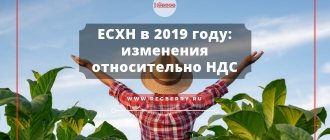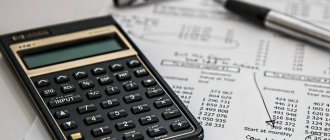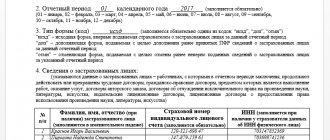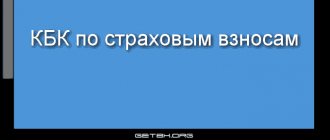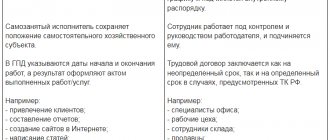Astral
September 11, 2021 9281
Taxes
Who is an agricultural producer?
Just in case, let us remind you: Unified agricultural tax can be used by those organizations and individual entrepreneurs that either produce agricultural products or provide services to agricultural producers in the field of livestock and crop production. This may not be agriculture itself, but activities directly related to it - for example, working with the landscape (replanting trees, etc.).
Moreover, simply engaging in agriculture is not enough - it is important that more than 70% of revenue comes from the production and sale of agricultural products (or services related to their production).
By using this special regime, the producer can also reduce the tax on the amount of agricultural expenses. These include, for example, the costs of purchasing seeds, seedlings, feed, and veterinary drugs. In this article we will not list a complete list of such expenses; you can find it in paragraph 2 of Art. 346.5 Tax Code of the Russian Federation.
Why did the agricultural producer become a VAT payer?
The need to reform the Unified Agricultural Tax has been discussed for a long time. The following problem was raised: entrepreneurs in the field of agriculture, subject to the Unified Agricultural Tax, “fell out” of the system for calculating and deducting value added tax and, in fact, were not its full participants. The natural consequence is the loss of customers, and therefore a deterioration in competitiveness.
All this follows from Letter of the Ministry of Finance of Russia dated January 24, 2021 No. 03-07-14/3564. You can view it here.
Sales of agricultural products purchased from the population
If an organization sells agricultural products or processed products purchased from the population, determine the VAT tax base as the difference between the market price and the purchase price of the specified products (clause 4 of Article 154 of the Tax Code of the Russian Federation).
In this case, two conditions must be met:
1. Agricultural products or their processed products must be purchased from citizens who are not entrepreneurs (letter of the Ministry of Finance of Russia dated December 7, 2006 No. 03-04-11/234).
2. Agricultural products and products of their processing must be included in the list approved by Decree of the Government of the Russian Federation of May 16, 2001 No. 383.
If both conditions are met, then calculate VAT on the sale of agricultural products as follows.
If sold agricultural products are subject to VAT at a rate of 18 percent, use the formula:
| VAT = Sales price – Purchase price × 18/118 |
If sold agricultural products are subject to VAT at a rate of 10 percent, use the formula:
| VAT = Sales price – Purchase price × 10/110 |
Such rules are established in paragraph 4 of Article 154 and paragraph 4 of Article 164 of the Tax Code of the Russian Federation.
If at least one of the conditions is not met, charge VAT in the usual manner - based on the full sale price (clause 1 of Article 154 of the Tax Code of the Russian Federation).
An example of reflecting in accounting the accrual of VAT on the sale of agricultural products purchased from the population
Torgovaya LLC retails food products. The store bought potatoes from a citizen who is not an entrepreneur for further resale. The purchase price of potatoes is 100,000 rubles. The store records goods at purchase prices.
The accountant reflected the receipt of potatoes as follows:
Debit 41 Credit 76 – 100,000 rub. – potatoes purchased from a citizen are capitalized;
Debit 76 Credit 50 – 100,000 rub. – money was paid to the citizen.
Revenue from the sale of potatoes amounted to 155,000 rubles. Potatoes are listed in the list of agricultural products approved by Decree of the Government of the Russian Federation of May 16, 2001 No. 383. When selling potatoes, a VAT rate of 10 percent is applied (subclause 1, clause 2, article 164 of the Tax Code of the Russian Federation). The amount of VAT accrued on the sale price of potatoes is equal to: (155,000 rubles – 100,000 rubles) × 10/110 = 5,000 rubles.
The Hermes accountant reflected the sale of potatoes to customers as follows:
Debit 50 Credit 90-1 – 155,000 rub. – receipts from customers for sold potatoes were received at the cash register;
Debit 90-3 Credit 68 subaccount “Calculations for VAT” – 5000 rubles. – VAT was charged on potatoes sold;
Debit 90-2 Credit 41 – 100,000 rub. – the cost of potatoes sold is written off.
If an organization purchases products simultaneously from both enterprises and the public, then in order to correctly determine the tax base for VAT, it is necessary to organize separate accounting of the purchased products. This can be done by opening additional sub-accounts to accounts 41 “Goods” and 90 “Sales”, which will separately reflect the cost of goods purchased from citizens and organizations.
An example of separate accounting of agricultural products purchased from citizens and organizations to determine the tax base for VAT
LLC "Torgovaya" capitalized 100 kg of bee honey, of which 50 kg was purchased from a citizen (not an entrepreneur) at a price of 50 rubles. per kilogram. The organization received the remaining 50 kg of honey from a wholesale organization at a price of 59 rubles. per kilogram (including VAT (18%) - 9 rubles). Accounting for goods in the store is carried out at purchase prices.
Hermes purchases products simultaneously from a wholesale organization and from citizens. Therefore, the Hermes accountant organized separate accounting of purchased goods.
Sub-accounts were opened for account 41:
- “Agricultural products purchased from organizations”;
- "Agricultural products purchased from the population."
To count 90:
- “Sale of goods purchased from organizations”;
- “Sale of agricultural products purchased from the population”;
- “Cost of goods purchased from organizations”;
- “Cost of agricultural products purchased from the population.”
The organization’s accountant reflected the receipt of honey as follows:
Debit 41 subaccount “Agricultural products purchased from organizations” Credit 60 – 2500 rub. (50 kg × (59 rub./kg – 9 rub./kg)) – honey received from a wholesale organization is capitalized;
Debit 19 Credit 60 – 450 rub. (50 kg × 9 rubles/kg) – input VAT on purchased honey is taken into account;
Debit 68 subaccount “Calculations for VAT” Credit 19 – 450 rub. – accepted for VAT deduction based on the seller’s invoice;
Debit 41 subaccount “Agricultural products purchased from the population” Credit 76 – 2500 rub. (50 kg × 50 rub./kg) – honey received from a citizen is capitalized;
Debit 60 Credit 51 – 2950 rub. (50 kg × 59 rub./kg) – payment to the wholesale organization is transferred;
Debit 76 Credit 50 – 2500 rub. – money was paid to the citizen.
All honey was sold at retail at a price of 68 rubles. per kilogram. Bee honey is included in the list of agricultural products approved by Decree of the Government of the Russian Federation of May 16, 2001 No. 383. When selling honey, a VAT rate of 18 percent is applied.
The accountant reflected the sale of honey as follows:
Debit 50 Credit 90-1 subaccount “Sale of goods purchased from organizations” - 3,400 rubles. (50 kg × 68 rub./kg) – revenue from the sale of honey purchased from a wholesale organization is reflected;
Debit 90-3 Credit 68 subaccount “VAT calculations” – 519 rubles. (RUB 3,400 × 18/118) – VAT is charged on proceeds from the sale of honey purchased from a wholesale organization;
Debit 90-2 subaccount “Cost of goods purchased from organizations” Credit 41 subaccount “Agricultural products purchased from organizations” - 2500 rubles. – the cost of sold honey purchased from a wholesale organization is written off;
Debit 50 Credit 90-1 subaccount “Sale of agricultural products purchased from the population” – 3,400 rubles. (50 kg × 68 rubles/kg) – revenue from the sale of honey purchased from a citizen is reflected;
Debit 90-3 Credit 68 subaccount “VAT calculations” – 137 rubles. ((3400 rub. – 2500 rub.) × 18/118) – VAT is charged on the difference between the sales price and the purchase price of honey purchased from a citizen;
Debit 90-2 subaccount “Cost of agricultural products purchased from the population” Credit 41 subaccount “Agricultural products purchased from the population” - 2500 rubles. – the cost of sold honey purchased from a citizen is written off.
Situation: is it possible to calculate VAT on the inter-price difference? The organization purchases agricultural products from the population and produces food products from them, which it then sells.
No you can not.
According to the Russian Ministry of Finance, the provisions of paragraph 4 of Article 154 of the Tax Code of the Russian Federation apply only to organizations that resell agricultural products purchased from the population (products of their primary processing) unchanged. The list of such agricultural products was approved by Decree of the Government of the Russian Federation of May 16, 2001 No. 383.
Moreover, if an organization sells agricultural products that were primarily processed by citizens, then it has the right to take advantage of preferential tax treatment only if the list names not only specific types of agricultural products (for example, tea leaves or ferns), but also the possible results of its primary processing (for example , semi-finished leather products or leather processing products). If an organization buys agricultural products mentioned in the list (primary processed products) from the population, then further processes them and then sells finished products (for example, sausages or semi-finished meat products), then it does not have the right to take advantage of the preferential rate. This organization must charge VAT on the entire amount of revenue (clause 1 of Article 154 of the Tax Code of the Russian Federation).
Such clarifications are contained in letters of the Ministry of Finance of Russia dated January 26, 2005 No. 03-04-04/01, dated April 27, 2002 No. 04-03-11/17. This point of view is supported by some arbitration courts (see, for example, the resolution of the Federal Antimonopoly Service of the Central District of October 8, 2008 No. A36-528/2008).
Advice: there are arguments that allow organizations to calculate VAT on the inter-price difference when selling processed agricultural products purchased from the population. They are as follows.
The condition for determining the tax base under paragraph 4 of Article 154 of the Tax Code of the Russian Federation is the purchase of agricultural products from citizens who are not VAT payers. Therefore, the procedure for calculating the VAT tax base established by this paragraph is applicable both when selling agricultural products themselves and when selling the results of their processing. Thus, an organization that sells goods made from agricultural products purchased from citizens (products of their primary processing) has the right to charge VAT on the difference between revenue and expenses for the purchase of agricultural products.
Some arbitration courts adhere to this position (see, for example, decisions of the FAS Volga District dated September 19, 2007 No. A65-3704/2006, North Caucasus District dated January 16, 2007 No. F08-6441/2006, Central District dated 9 February 2004 No. A48-2429/03-13).
In addition, in the resolutions of the Federal Antimonopoly Service of the Volga Region dated November 30, 2004 No. A55-4479/2004-31, dated October 12, 2004 No. A12-5452/04-C25, special emphasis was placed on the ambiguity of the legal norm contained in paragraph 4 of the article 154 of the Tax Code of the Russian Federation. According to the judges, it does not follow from the content of this paragraph that the procedure established in it applies only to operations for the sale of agricultural products purchased from citizens, without further processing. And since the list approved by Decree of the Government of the Russian Federation of May 16, 2001 No. 383 is not exhaustive, it cannot be concluded from it that it does not apply to finished products.
Can a Unified Agricultural Tax payer be exempt from paying VAT?
Yes maybe. But not everyone. Only an agricultural producer who meets at least one of two conditions can take advantage of this right:
- he switched to the Unified Agricultural Tax in the same calendar year in which he plans to be exempt from VAT;
- the amount of his income taxed by the Unified Agricultural Tax for the previous year was less than the established threshold (100 million rubles for 2021, 90 million for 2021, 80 million for 2021, 70 million for 2021, 60 million for 2022 and subsequent years)
You can be exempt from VAT. But is it necessary?
Exemption from VAT is not always beneficial, so you definitely need to weigh the pros and cons.
The exemption is unlikely to be beneficial to those agricultural producers whose customers, for the most part, are VAT payers themselves. Otherwise - if the majority of product consumers are not VAT payers - it is still more profitable to take advantage of the benefit.
Sales of cars purchased from the public
If an organization sells cars previously purchased from citizens for resale, determine the VAT tax base as the difference between the market price (including VAT) and the purchase price of the vehicle (clause 5.1 of Article 154 of the Tax Code of the Russian Federation).
In this case, the following condition must be met. Cars must be purchased from citizens who are not entrepreneurs.
If this condition is met, then calculate VAT on car sales as follows:
| VAT = Sales price – Purchase price × 18/118 |
In this formula, the selling price is the price that the parties set when completing a purchase and sale transaction. It is assumed that the sale price corresponds to the level of market prices until the contrary is proven (clauses 1 and 3 of Article 105.3 of the Tax Code of the Russian Federation).
Such rules are established in paragraph 5.1 of Article 154, as well as in paragraphs 3 and 4 of Article 164 of the Tax Code of the Russian Federation.
If the specified condition is not met, charge VAT in the usual manner - based on the full sale price (clause 1 of Article 154 of the Tax Code of the Russian Federation).
An example of reflecting in accounting the accrual of VAT on the sale of cars purchased from the public
LLC "Torgovaya" conducts activities in the sale of vehicles. The store bought a VAZ-21140 passenger car from a citizen who is not an entrepreneur for further resale. The purchase price of the car is 150,000 rubles. The store records goods at purchase prices.
The accountant reflected the receipt of the car as follows:
Debit 41 Credit 76 – 150,000 rub. – a vehicle purchased from a citizen has been registered;
Debit 76 Credit 50 – 150,000 rub. – money was paid to the citizen.
The proceeds from the sale of the car amounted to 200,000 rubles. The amount of VAT accrued on the sales price of the car is equal to: (200,000 rubles – 150,000 rubles) × 18/118 = 7,627 rubles.
The Hermes accountant reflected the sale of the car to buyers as follows:
Debit 50 Credit 90-1 – 200,000 rub. – receipts from buyers for the sold car are received at the cash desk;
Debit 90-3 Credit 68 subaccount “VAT calculations” – 7627 rubles. – VAT is charged on the sold car;
Debit 90-2 Credit 41 – 150,000 rub. – the cost of the sold car is written off.
If an organization resells cars, purchasing them simultaneously from both organizations and the public, then in order to correctly determine the tax base for VAT, it is necessary to organize their separate accounting. This can be done by opening additional subaccounts to accounts 41 “Goods” and 90 “Sales,” which will separately reflect the cost of vehicles purchased from citizens and organizations.
Features of confirming the 0% VAT rate when exporting to the EAEU countries
A distinctive feature of sales to the EAEU countries is the presence of a simplified export procedure, which is due to the agreement between the countries on mutual cooperation.
Therefore, the general list of documents justifying the 0% rate is small and consists of:
- from the contract;
- shipping and transport documents;
- import application or list of applications.
Clause 4 of Appendix 18 to the Treaty on the EAEU stipulates that one of the documents to confirm the zero rate is a bank statement. Why a bank statement is not in the above list, read the material “A bank statement is not required to confirm export to the EAEU” .
What documents can be used to confirm the zero rate if the buyer exports goods to the EAEU states independently, read the publication “Export to the EAEU states: how to confirm the zero VAT rate when goods are self-exported by the buyer”.
We also advise you to pay attention to the requirements for confirmation of the rate when exporting to other countries through the territories of the EAEU countries. You will learn about them from the article “How to confirm a 0% rate if goods are exported without border customs control .”
Like any shipment, exports require an invoice to be issued within 5 days from the date of sale. It is important to pay attention to the registration procedure in case of selling goods through a branch. Read about this in our material “ When exporting goods to Armenia, Belarus or Kazakhstan through a division, it is better to indicate the checkpoint of the head office in the invoice .
You can find out whether such an invoice should be submitted to the Federal Tax Service to justify the 0% rate here .
For information on how to take into account the amount of advance received by the exporter from its foreign counterparty, see the material “How to take into account advances from partners from the EAEU for VAT purposes? "
Are the rules for confirming a zero VAT rate when exporting to the EAEU countries and CIS countries the same, read the publication “ How to confirm a 0% VAT rate when exporting to CIS countries?” .
Confirmation of 0% VAT rate when exporting to other countries
The main documents in this case are:
- customs declaration.
- Contract.
- shipping documents.
The customs declaration can be temporary or complete. Which one is suitable for export confirmation, read in this publication .
The customs declaration can be issued electronically. Whether you can use a paper copy of it to confirm your export, see here .
From the 4th quarter of 2015, some documents from the list can be replaced by registers, the formats of which can be found in the publication “Approved forms and formats of registers for confirming the VAT rate of 0%” . For registers of documents confirming the 0% rate, there are also control ratios. For more information about them, see the materials:
- “Control ratios for checking Registers have appeared to confirm the 0% rate”;
- “New control ratios for VAT”;
What rules for confirming the zero rate apply when exporting to the Donetsk People's Republic controlled by Ukraine, read the material “How to confirm the export of goods to the territory of the DPR” .
Are there any specific features of confirming the zero rate if ownership of the exported goods passes to a foreign buyer in Russia, read the publication “The moment of transfer of ownership is not important for the zero VAT rate .
